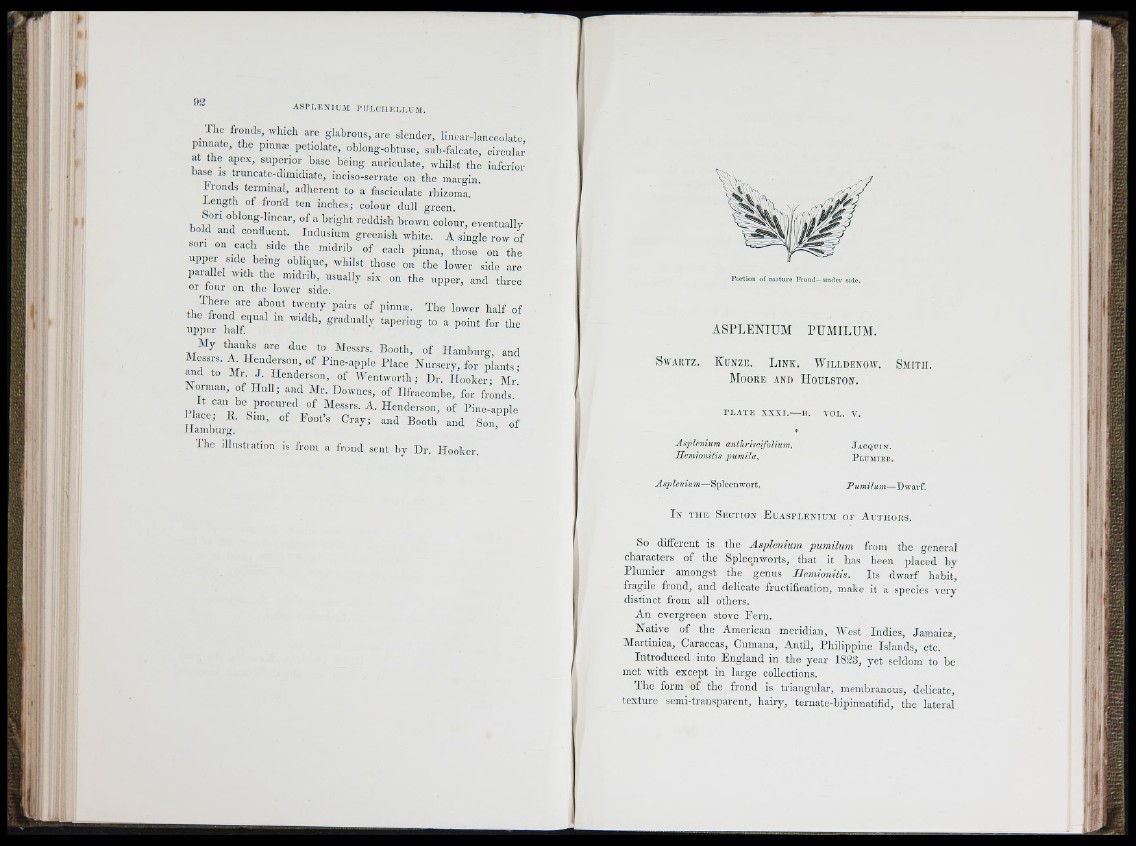
m
i l i c il omis, which are glabrous, are slender, linear-lanccolatc
pinmite, the pinnic_ petiolate, oblong-obtuse, sub-felcatc, circulai-
a e apex, supe rior base being auriculate, whilst the inferior
b a ^ IS truncate-dimidiate, inciso-serrate on the margin.
T ronds terminal, adhe ren t to a fasciculate rhizoma.
l e n g th of frond ten inches; colour dull green.
Son oblong-linear, of a bright reddish brown colour, eventually
bold and confluent. Indusium greenish white. A single row of
son on each side the midrib of each pinna, those on the
upper side being oblique, whilst those on the lower side are
paiallel with the nudnb, usually six on the upper, and three
or four on the lower side.
Iher e are about twenty pairs of pinnæ. The lower half of
the frond equal in width, gradually tapering to a point for the
upper half.
My thanks are due to Messrs. Booth, of Hamburg, and
“ r r ’ t W " i ’ Nursery, for plants;
mid Mr. J. Henderson, of Wentworth; Dr. Hooker; Mr.
Norman, M H u ll; and Mr. Downes, of Ilfracombe, for fronds.
Messrs. A. Henderson, of Pine-apple
lace K. Sun, of l o o t s Cray; and Booth and Son, of
Hamburg. ’
The illustration is from a frond sent by Dr. Hooker.
It ■:
H'ii;
Portion ot nmtnre Frond-nmlc r sido.
ASPLENIUM PUMILUM.
StvARTz. K unze. L in k . W illdenow.
Moore and H oulston.
S m i t h .
PLATE XXXI.— I). VOL. V.
Asp len ium aniliriscifolium,
Hemionitis pumiJa,
Asp len ium—Spleenwort.
J acquin.
P lumier.
P um ilum—Dwarf. i m
I n T H E S e c t i o n E u a s p l e n i u m o f A u t h o r s .
So different is the Asplemum pumilum from the general
chararters of the Splecnworts, that it has been placed by
Plumier amongst the genus Hemionitis. Its dwarf habit,
fragile frond, and delicate fructification, make it a species very
distinct from all others.
An evergreen stove Eern.
Native of the American meridian. West Indies, Jamaica,
Martinica, Caraccas, Cumaiia, Antil, Philippine Islands, etc.
Introduced into England in the year 1823, yet seldom to be
met with except in large collections.
Ih e form of the frond is triangular, memhranous, delicate,
texture semi-transparent, hairy, ternate-bipinnatifid, the lateral